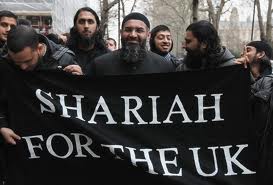Frequently lobbed at American participants in chat forums regarding terrorism is the accusation "you Yanks supported the IRA for decades and now you want to lecture the world on how evil terrorism is!" Unfortunately, such an inane generalization has gained currency in the on-line community. As is the case with such accusations, they have a habit of being repeated to the point where they lodge themselves into the popular consciousness and cannot be extricated easily.
The recent revelations that Rep. Peter King had indeed given money to the Irish Republican Army has bolstered this accusation. Rep. King is, however, hardly representative of the entire House of Representatives. No person, when queried as to how the U.S. subsidized IRA terrorism, has been able to offer examples of legislation passed by both houses allocating money to the Irish Republican Army. Lacking proof of such official U.S. patronage, the argument often turns to two other venues: the existence of NORAID and the collections undertaken in bars in New York and Boston among the Irish diaspora.
Organizations such as Clan na Gael and Noraid have certainly existed and have provided succour of sorts to those on the Republican side in Ulster; however, to believe that small organizations within a nation of over 300,000,000 people substantiate the claim that "America supports the IRA" is ludicrous. What should one then think of Britain, a nation that has shown itself via public demonstrations, to be the home of more than one would-be Jihadist? Of the nation's 1,500 mosques, what if 10 were found to be linked to radical movements abroad? Would that then make Britain a "supporter of Islamic fundamentalist terror"? Hardly. The actions of certain individuals outside of our lawful bodies of legislation (save for Rep. King, who appears to be an isolated case), hardly makes a nation a supporter of terrorism.
What also needs to be remembered is that the IRA bombing campaigns did not transpire in England until the 1970s. As the Troubles intensified in 1969, a great deal of sympathy was felt worldwide for the Catholic minority in Ulster. Many individuals offering material aid to those on that side of the divide acted in good faith towards those seen as oppressed unfairly. Thus, not all aid offered to the minority in Ulster was geared towards the advocacy of terrorism; in fact, a great deal of it was aid with day-to-day living, a strenuous undertaking for those often denied employment and suitable housing. Althougn NORAID is an agency that has advocated on behalf of the Catholic minority in Ulster, NORAID is hardly indicative of U.S. legislation or the charitable inclinations of the U.S. majority. As stated previously, the presence of those individuals who support radical Islam within Britain hardly makes the United Kingdom a state supporter of Islamic extremism.
One other factor to which attention should be drawn is the inordinate amount of attention drawn to the IRA itself. The IRA is not without its adversarial counterparts. One need only look at the UDA (Ulster Defence Association), active from 1971 to 2007, to see that bloodshed was not inflicted solely by the Republican side. In addition to the UDA, Royalist paramilitary groups have also included:
The Ulster Volunteer Force (responsible for over 400 civilian deaths during the Troubles)
Loyalist Volunteer Force (responsible for 18 murders)
Red Hand Commando (responsible for 13 murders)
Ulster Young Militants
Ulster Resistance
UVF Mid-Ulster Brigade
Whether it be murder, arson, or acts of petty hooliganism, Royalist groups have also perpetrated violence upon people in the United Kingdom. Such facts should not be marginalized when entering into an analysis of the IRA and its history. The actions of the UDA or UVF do not in any way exonerate the IRA, but it should never be forgotten that they do not work within a vacuum. The real issue here is not so much the IRA or its counterparts on the other side of the ideological/religious divide. What stands at the forefront is how persistent an absurd accusation has become, particularly in light of the diversity and sheer size of the U.S. populace.




No comments:
Post a Comment